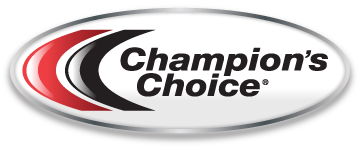- Rough coats
- Decreased performance
- Unusual eating habits like consuming dirt or chewing on tool handles, trees, board fences or another animal’s mane or tail.
- In poultry, an increase in pecking behavior, feather eating, general flock nervousness, and/or reduced egg production.
What are the symptoms of copper mineral deficiency in animals?
- Anemia
- Fence and bark chewing
- In sheep, abnormalities of the wool
- In cattle, loss of hair coat color
- In calves, blood vessel problems
- In young animals, bone development issues
What are the symptoms of selenium mineral deficiency in animals?
- Reproductive issues
- White muscle problems
- Performance issues
- Muscle stiffness
- Reduced immune response
What are the symptoms of iodine mineral deficiency in animals?
- Enlarged thyroid gland; goiter swell
- Metabolic disorders; decrease in metabolic rate
- Hair loss
- Dry and scaly skin
What are the symptoms of cobalt mineral deficiency in animals?
- Lack of appetite
- Poor growth
- In sheep, decrease in wool production and growth
- In ruminants, vitamin B12 deficiency
How do I know if my dairy cattle are salt deprived?
Symptoms of salt deprivation in dairy cattle include licking wood and eating soil or sweat. Symptoms occur within 2-3 weeks of deprivation. Water consumption will become excessive and urine output will greatly increase. Also, if there are several weeks of deprivation, appetite will begin to decline and weight loss will occur, and the animal may also develop a rough coat. In a high-producing cow, the breakdown can be sudden and death can occur.
Can cattle overconsume salt?
- Unless cattle are deprived, they will normally not overconsume salt. If they are deprived and then allowed to consume the right amount, they will eat excess amounts until their sodium levels come into balance in their bodies. Be sure to allow access to plenty of water during this time, as cattle will need extra water as well until salt levels are back in balance.
- Cattle that have free access to granulated flake or loose salt will consume approximately twice as much as they will when salt is furnished in the form of compressed blocks. Eating twice as much loose salt does not mean that cattle are overconsuming; rather, it means that cattle tongues are not optimized to lick efficiently to obtain the right level of nutrients, and that access to loose salt should be given to ensure the best chance of obtaining the right level of sodium.
How much salt do cattle need?
The salt requirement of cattle is met by including 0.25% salt in the total ration. Salt may be satisfactorily fed free-choice rather than as part of a mixed ration.
Why feed trace minerals with salt to animals?
Salt is one of the few minerals that animals will seek out in their natural environment. There are seven trace minerals essential in feed: iron, copper, zinc, manganese, cobalt, iodine, and selenium. Since livestock have a natural appetite for salt, but not for trace minerals, this makes salt an ideal medium to deliver these vital minerals.
Is water softener salt harmful to animals?
Water softening salts are not intended for human or animal feeding. For some animals, particles may be too large and cause choking issues. In addition, some water softening salts may have additives that are inappropriate for animal feeds.
